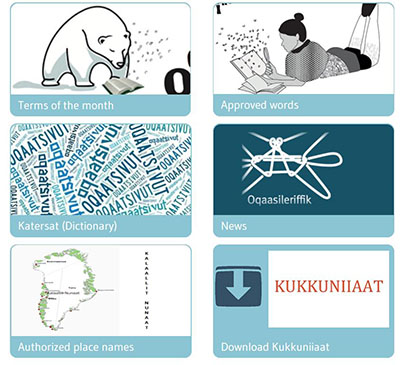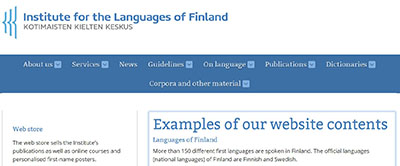Official bodies overseeing the Nordic languages
There has been much more official involvement with the Nordic languages than with English. That is true even of the well-established Danish, Icelandic and Swedish standards. Each language exists under the watchful eye of a language ‘committee’, ‘board’ or ‘council’, for the most part state-sponsored, semi-autonomous bodies. A wide spectrum of interested parties participates, including academics, schoolteachers, writers, journalists and terminological experts.

Although it is the task of each such body to respond to enquiries and publish advice on usage, their additional remits can vary considerably. Part of the brief of the Norwegian language council, for example, has until recently been to support trends which will bring bokmål and nynorsk closer together, and it has put much effort into evaluating the language of textbooks and making adjustments to the spelling and forms of individual words. A central activity of the Icelandic language committee is the development of native terminology, since, in line with a long-standing tradition of purism, one of the main tasks of Icelandic language cultivation is to provide Icelandic equivalents for foreign terms. The Sami language committee was heavily involved in the establishment of a common North Sami orthography, a goal finally achieved in 1978. It has also been concerned with more general issues of codification, reflecting the fact that Sami is among the least well documented of the Nordic tongues. As well as overseeing the development of their respective languages, the individual committees/councils/boards cooperate at the pan-Nordic level. Here important tasks are the facilitation of inter-Nordic communication and the strengthening of the Nordic languages in the face of the perceived threat from English.
Although the language bodies publish many books and pamphlets, and disseminate information in a variety of other ways, the impact of their work on the broad lines of linguistic development has not been great. The tendency for national and regional norms to prosper at the expense of traditional dialects, for example, or for English to be viewed as the language of sophistication and success, reflect indisputable changes in society. Moreover, the overarching linguistic climate in each speech community predates the advent of official involvement by some considerable time. This is true of the general stability of Danish and Swedish, the struggle between rigsmaal/bokmål and landsmaal/nynorsk, Icelandic purism, Faroese/Danish diglossia, the advance of Finnish, and the decline of Sami. Each of these springs from political, social and cultural circumstances of the past and present.

Another example of an official body: Institute for the languages of Finland, www.kotus.fi/en
External links:
sprognævnet (Denmark),
Málráðið (Faroes),
Kotimaisten kielten keskus (Finland),
Oqaasilesiffik (Greenland),
Íslensk málnefnd (Iceland),
Språkrådet (Norway),
Sámediggi (various spellings used),
Språkrådet (Sweden)